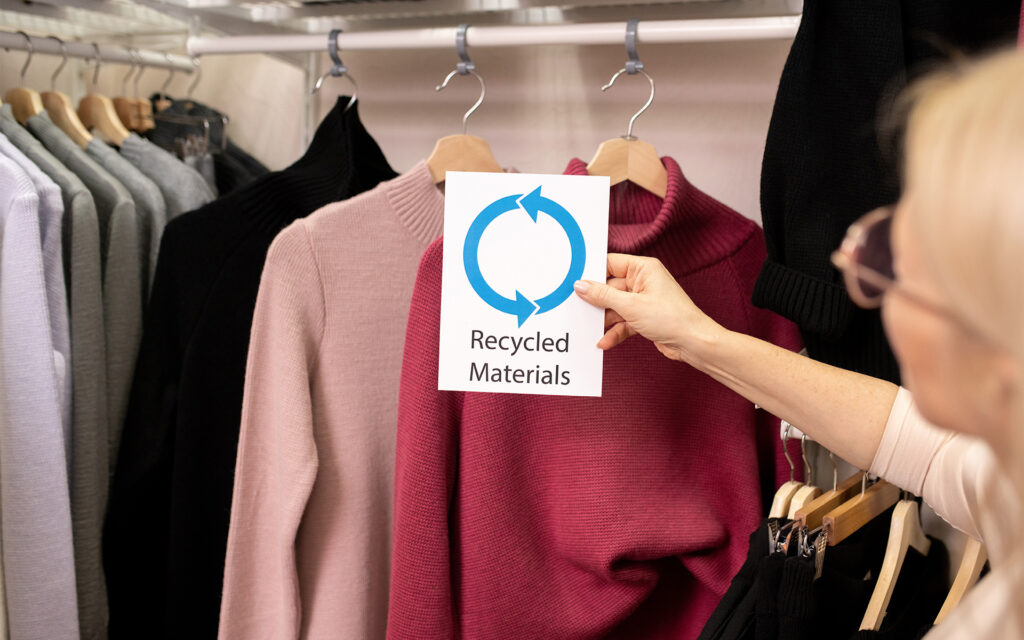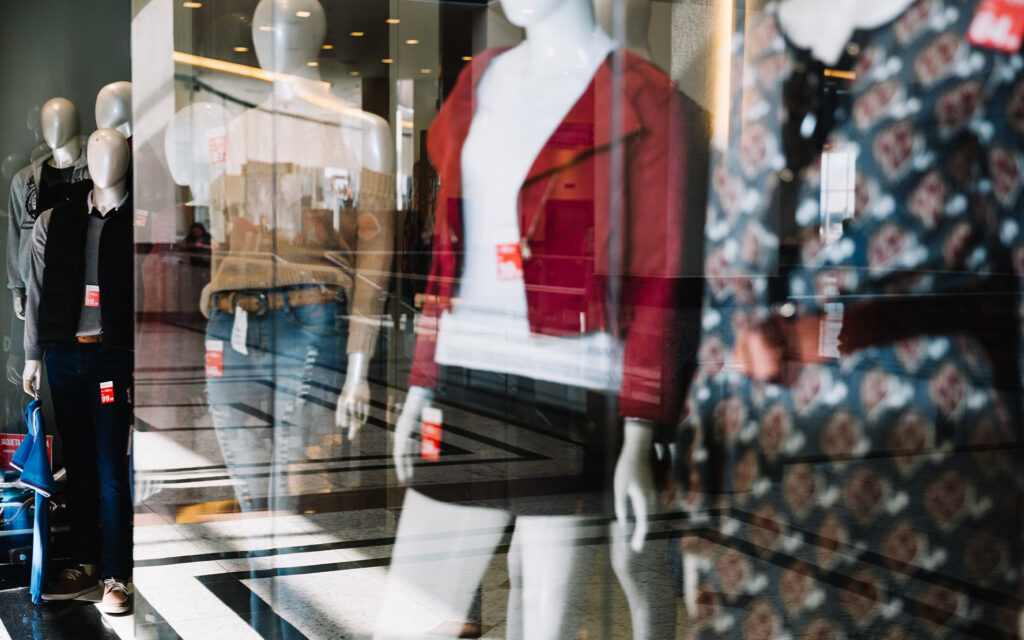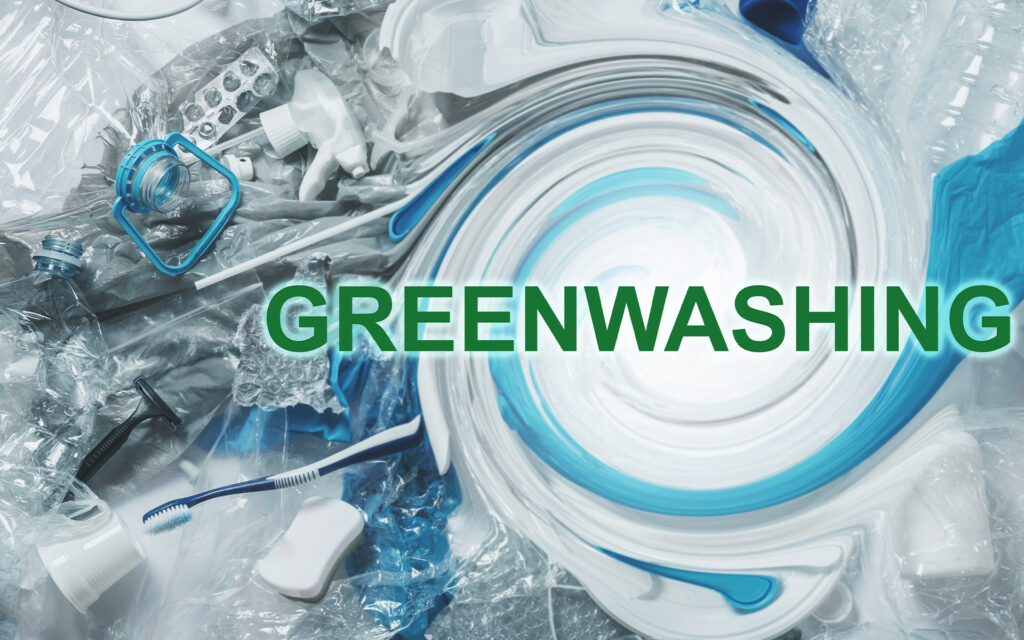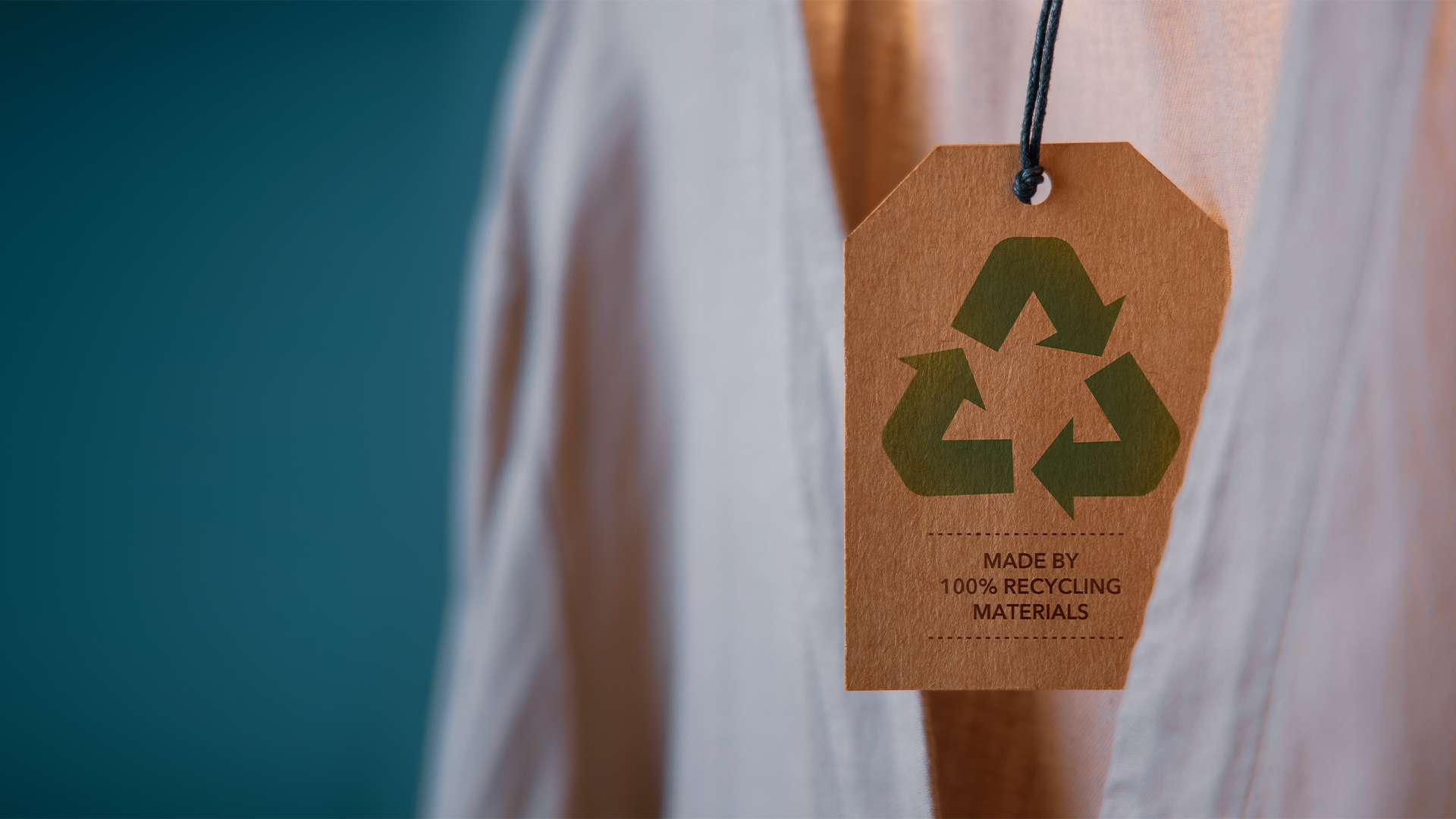According to data from the latest Pulse of the Fashion Industry report prepared by the Global Fashion Agenda, it is estimated that around 100 billion garments are produced worldwide each year. Current reports state that many fashion companies use misleading labels with false claims about sustainability.

Plastic pollution
About 70% of the most used fabrics in garments are synthetic: polyester, acrylic, and nylon are petroleum derivatives.
The biggest problem with using these fabrics is that a large number of these synthetic garments after a few is incinerated or ends up in a landfill. Because plastic is not biodegradable it contaminates soil because it takes years to decompose.
In addition, washing them can pollute the ocean. When we wash synthetic clothing, tiny plastic fibers called microplastics come off and the filter of washing machines cannot capture them.
As a result, they move to wastewater and can end up in the ocean or rivers. Because of their small size, marine animals can ingest microplastics that potentially enter the human food chain.

“Washing clothes alone causes every year about half a million tons of plastic microfibers to be dumped into the ocean, the equivalent of nearly three billion polyester shirts. This occurs because water treatment plants let up to 40% of the microfibers they receive pass to lakes, rivers, and oceans due to their small size. Most wastewater treatment plants are not equipped to capture microplastics” (United Nations Environment Program).
Unfortunately, according to Fashion Revolution’s Fashion Transparency Index 2022, only 24% of fashion companies say what they are doing to reduce the use of synthetic garments and minimize microfiber loss.
Label content
Garments contain a label attached to them which is required by law in many countries and provides specific information on:
- Identification of the manufacturer
- Country of origin
- Composition
- Size
- Care instructions
Voluntary eco-label
In the case of the European Union, the voluntary eco-label may be used on textiles, footwear, and clothing products that:
- Use only a minimum of substances harmful to health and the environment;
- Reduce water and air pollution;
- They offer color resistance to washing, rubbing, sweat, and exposure to light.
Similarly, the European Textiles Regulation stipulates that textile products sold within the European Union must be labeled in a durable, easily legible, and visible manner.

The truth behind the labels
We think that garment labels contain reliable information about their composition.
However, several reports have shown that a large number of fashion companies use deceptive labels. They make false claims about sustainability in order to attract the committed consumer to take care of the environment.
Misleading claims
The non-profit organization Changing Markets Foundation published in 2021 the report entitled “Synthetics Anonymous: Addiction of Fashion Brands to Fossil Fuels” on the use of synthetic fibers in fashion.
The report looked at 46 fast fashion and luxury fashion companies, including ASOS, Burberry, H&M, M&S, Primark, and Zara, at a selection of 4,000 products in Europe and the UK, assessing the number of synthetic materials used.
Almost 60% of the ecological claims on products marked as environmentally friendly were unfounded or misleading.
According to the report, H&M tops the list with 96% false claims, followed by ASOS with 89% and M&S with 88%.
In the case of H&M, its supposedly sustainable collection, Conscious Collection, used more synthetic materials than its main collection, while the former contained 72%, and the latter 61%.
The report highlighted not only the textile industry’s reliance on synthetic fibers but also how most of these companies claim to tackle the problem of fashion pollution with false solutions as a marketing strategy.

While companies rush to capitalize on consumer concerns by using sustainability as an advertising claim, the vast majority of these claims are pure style and no substance. As they clean up their garment collections, at the same time they are delaying the adoption of truly circular solutions.”
Urska Trunk, Campaign Director, Changing Markets Foundation
Synthetics Anonymous 2.0
In late 2022, the organization released a new report titled “Synthetics Anonymous 2.0: The Persistent Problem of Plastics in Fashion” which exposes the industry’s poor progress in ending synthetic textiles.
The analysis concluded that dependence on synthetic fibers has not undergone any significant change and that one in four of the largest fashion companies has a greater dependence on these fabrics.
Real percentages
A new report from Greenpeace has found that companies such as Benetton, C&A, Decathlon, H&M, Primark, and Zara, mislead consumers by talking about recycling and circularity, when:
- Only 3% of garments are made from recycled materials.
- Most of that 3% are fabrics made from plastic bottles that cannot be recycled again;
- Less than 1% consists of old fabrics.
Research also shows that sustainable labels are lacking clarity because their labeling is confusing. This happens due to missing information about materials, for providing false certifications, for lack of public information about their production chain, and for misleading claims about circularity.
No to greenwashing
According to the report by the Changing Markets Foundation, one of the main problems that fashion companies commit to is the lack of evidence to support their claims about sustainability, being guilty of greenwashing.
Misleading labels often mislead consumers. They use in their collection terms such as “conscious”, “ecological”, and “recycled” without explanations to support such “ecological” claims.
On the other hand, they intend to confuse consumers with labels that are presented as if they were a sustainability certification granted by an independent third party, when the reality is that they are created by the company itself.
Fortunately, the authorities are introducing new consumer protection legislation. They force businesses to answer legally for the kind of statements they make, as regulations against the use of plastic in fashion grow.

Despite false promises to reduce environmental pollution, many fashion companies still rely on plastic using synthetic fibers in their collections.
Consumers have the right to know the actual composition of the textile products they buy. They must choose consciously and with the certainty that they are not deceived.
And it is up to each consumer to make sure that a company is truly respectful of what it says.
Search engines such as Remake or Good On You, allow us to get an insight into the practices of sustainability, and social and environmental responsibility of fashion companies.
On the other hand, Changing Markets Foundation has created Greenwash.com for consumers to explore greenwashing.
When we take better care of our garments, we can use them longer, preserving their colors and shape, and preventing them from ending up in landfills.
Some tips for better garment care:
- Read the label before buying;
- Choose natural fabrics, such as cotton, linen, wool, and silk;
- Wash clothes in low water temperatures and less frequently;
- Use washing bags that capture microfibers released by synthetic fabrics;
- Avoid the dryer, the main cause of wear and tear of the garments;
- Dry in the open air
- Avoid dry cleaning as it is a process that uses chemicals.





